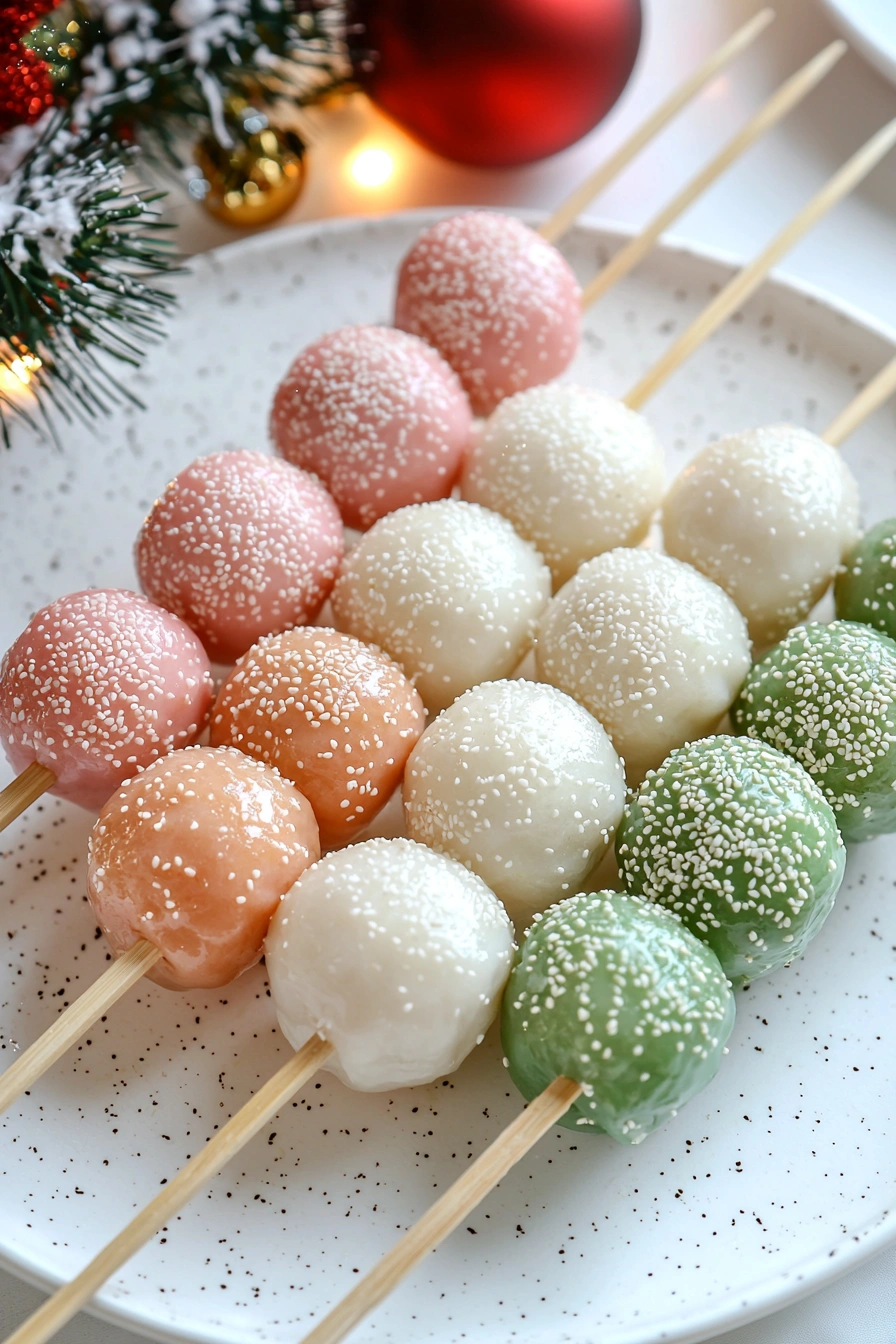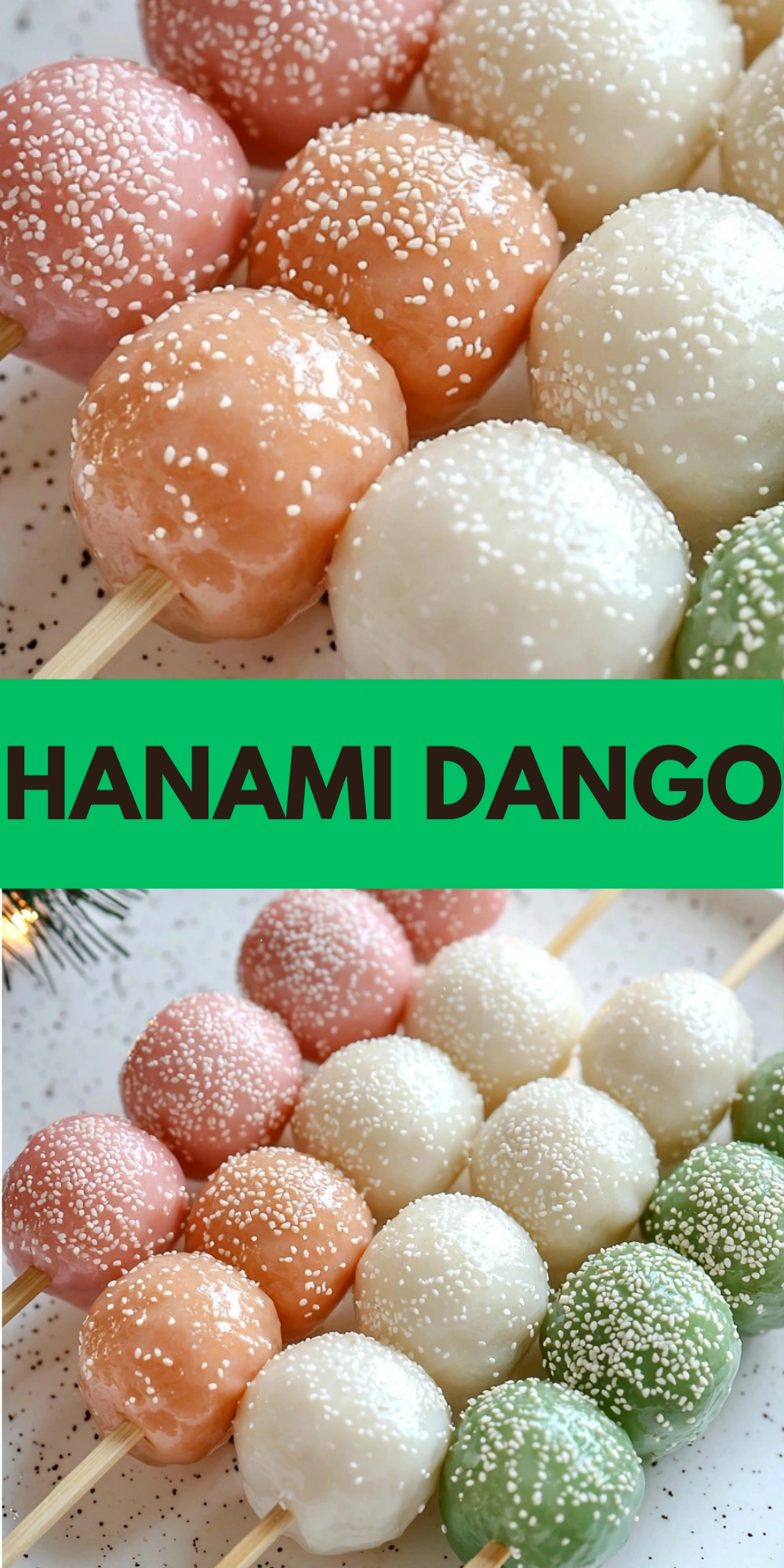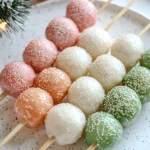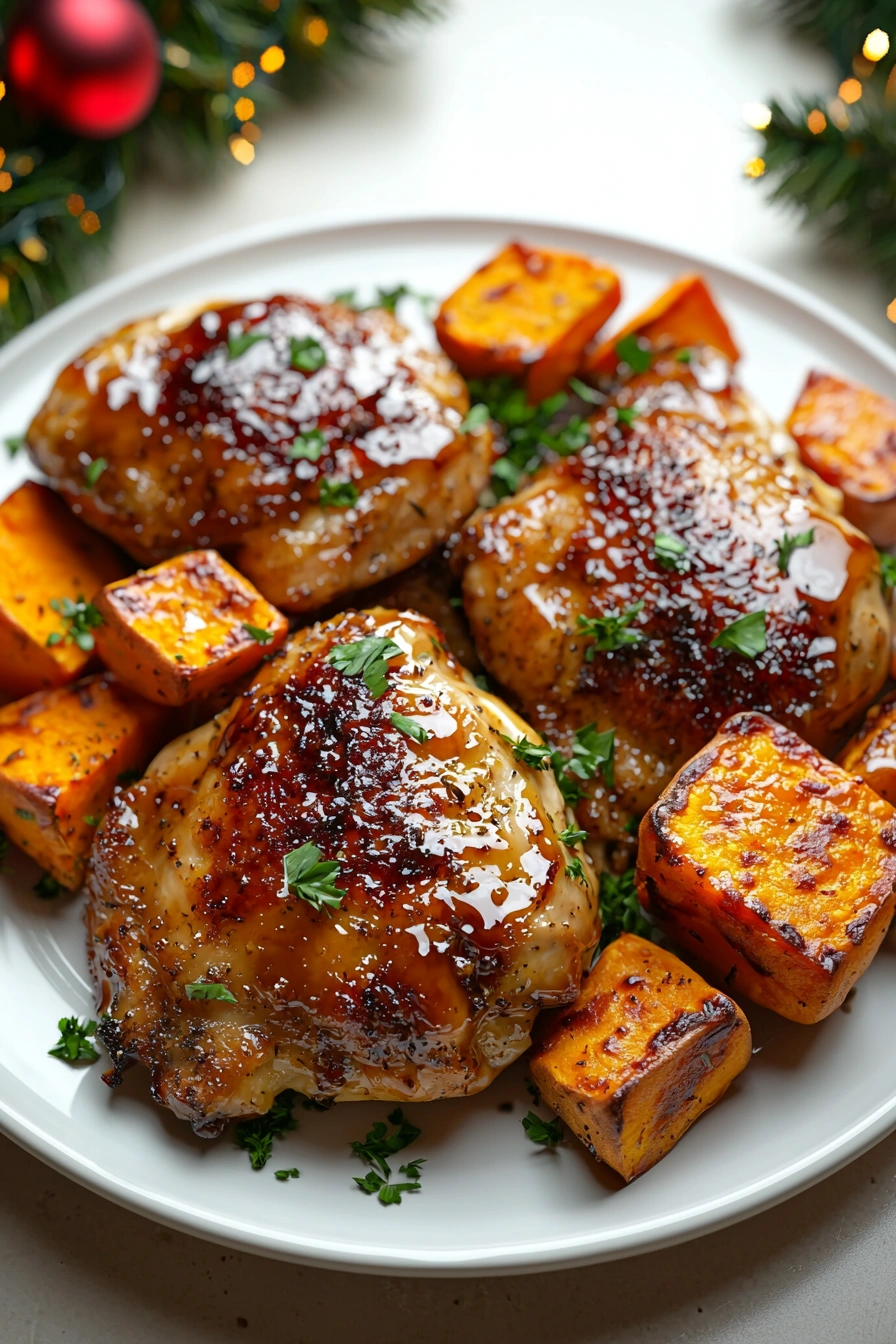Hanami Dango has always held a special place in my heart because it reminds me of one quiet spring afternoon I spent under a cherry blossom tree during a trip to Kyoto. I remember picking up a skewer from a nearby festival stand – soft, chewy, and perfectly sweet – and thinking, this is exactly what spring should taste like. That memory still lingers every time I recreate it at home.

These pastel-colored mochi balls are more than just cute – they’re soft, subtly flavored, and incredibly satisfying to make. Whether you’re celebrating spring, planning a picnic, or just want something pretty and fun to share, Hanami Dango is a timeless Japanese treat that never fails to brighten the day.
Ingredients
Here’s what I use for this recipe. You can always make substitutions if you prefer!
- Glutinous rice flour – The key ingredient that gives the dango its chewy texture.
- Silken tofu – Adds softness and makes the dough easier to knead and shape.
- Sugar – Gently sweetens the dough without overpowering.
- Food coloring – Used to create the iconic pink and green hues.
- Matcha powder – For natural green coloring and a subtle earthy flavor.
- Red food coloring or strawberry powder – To create the pink layer with a light fruity note.
- Bamboo skewers – For the traditional three-ball presentation.
Tools You’ll Need
- Mixing bowls – To prepare the separate dough portions for each color.
- Steamer or large pot with steaming tray – For cooking the dango until perfectly chewy.
- Parchment paper or steamer cloth – Prevents the dango from sticking during steaming.
- Spoons or cookie scoop – Helps portion the dough evenly.
- Skewers – For assembling the finished dango traditionally.
- Cooling rack or plate – To let the cooked dango set before serving.

Instructions
Step 1: Make the dough
I combine glutinous rice flour, silken tofu, and sugar in a bowl and knead it into a smooth, slightly sticky dough. If it’s too dry, I add a touch more tofu; if it’s too wet, a sprinkle of rice flour does the trick.
Step 2: Divide and color
I split the dough into three equal parts. One stays white, one gets a small pinch of matcha for green, and the last one gets a drop or two of pink food coloring (or strawberry powder) for that soft pink hue. I knead each portion until the color is even.
Step 3: Roll into balls
I roll each color into even, bite-sized balls – about the size of a large marble. I try to keep them uniform so they steam evenly and look beautiful when skewered.
Step 4: Steam the dango
I place the balls on parchment in a steamer and steam them for about 10 minutes, until they become slightly glossy and firm. Once done, I let them cool slightly on a plate.
Step 5: Assemble the skewers
Once cooled, I gently slide one pink, one white, and one green dango onto each skewer, keeping the colors in the traditional order. I sometimes dust them lightly with sesame or sugar for extra flair.
Tips
I make sure to knead the dough well – this helps the texture turn out soft and smooth after steaming.
If I want to use natural coloring, I go with beet juice for pink and matcha or spinach powder for green.
I like to serve them slightly warm for the softest bite, but they’re also lovely at room temperature.
They’re best eaten fresh but can be stored in an airtight container at room temperature for a day.
If reheating, I quickly steam them again for a minute to bring back that perfect chewiness.
Ways to Serve
I serve them during spring gatherings or cherry blossom viewings for a festive, seasonal vibe.
Paired with a warm cup of matcha or sencha, they make a peaceful afternoon snack.
You can also serve them with a drizzle of sweet syrup or a dusting of kinako (roasted soybean flour) for a richer experience.
For dessert platters, I sometimes alternate the colors and add gold flakes for a modern twist.
Frequently Asked Questions
What does Hanami Dango mean?
“Hanami” means flower viewing, and “dango” are Japanese rice flour dumplings – this treat is traditionally enjoyed during cherry blossom season.
Can I make Hanami Dango without tofu?
Yes, you can replace tofu with water, but the texture will be firmer and less silky.
Are Hanami Dango gluten-free?
Yes! Since they’re made with glutinous rice flour (which contains no gluten), they’re naturally gluten-free.
Can I use food coloring alternatives for Hanami Dango?
Absolutely – matcha, beet juice, strawberry powder, or spinach extract are all great natural options.
See You in the Kitchen
I hope you give Hanami Dango a try – it’s such a fun and beautiful recipe to make, especially during the spring. Whether you’re celebrating a season or just looking for something new to try, this sweet treat will surely brighten your day.
Happy Cooking!
Print
Hanami Dango
- Total Time: 25 minutes
- Yield: 5 skewers 1x
- Diet: Gluten Free
Description
Looking for the best Hanami Dango recipe? This easy, colorful, and healthy treat is perfect for spring gatherings and dessert ideas! With simple ingredients and a soft, chewy texture, this traditional Japanese snack is quick to make and beautiful to serve. Whether you’re celebrating cherry blossom season or just want a fun and festive dessert, this is a must-try!
Ingredients
- 1 cup glutinous rice flour
- 3 tbsp sugar
- 1/2 cup silken tofu
- Matcha powder (for green color)
- Pink food coloring or strawberry powder
- Water (if needed)
- Bamboo skewers
Instructions
- In a bowl, mix rice flour, sugar, and tofu. Knead into a smooth dough.
- Divide dough into 3 parts: keep one white, tint one green with matcha, and one pink with coloring.
- Roll each color into small balls about 1 inch in size.
- Steam the dango on parchment paper for 10 minutes until soft and glossy.
- Let cool slightly, then skewer in the traditional order: pink, white, green.
- Serve fresh or store in an airtight container at room temperature for 1 day.
Notes
- Use natural food powders for healthier coloring options.
- Knead dough well for best texture.
- If dough is too dry, add a few drops of water.
- Re-steam to refresh if storing overnight.
- Prep Time: 15 minutes
- Cook Time: 10 minutes
- Category: Dessert
- Method: Steaming
- Cuisine: Japanese
Nutrition
- Serving Size: 1 skewer
- Calories: 130
- Sugar: 6g
- Sodium: 5mg
- Fat: 1g
- Saturated Fat: 0g
- Unsaturated Fat: 1g
- Trans Fat: 0g
- Carbohydrates: 28g
- Fiber: 1g
- Protein: 2g
- Cholesterol: 0mg


